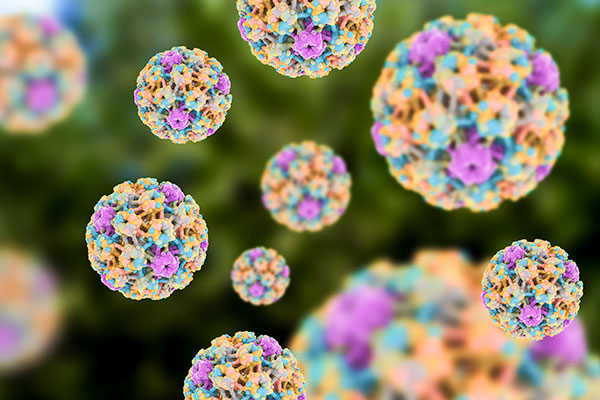A team of scientists led by investigators at the University of California, Riverside (UCR) has identified the individual subtypes of HPV that are strongly linked to HIV infections. While it has been known that individuals infected with HIV have a higher HPV prevalence, the impact that distinct HPV subtypes have on HIV acquisition has been elusive. However, the UCR team and their collaborators have just published new data that concludes a person with any HPV type, more than one HPV type, or high-risk HPV is more likely to acquire HIV.
Findings from the new study—released in PLOS ONE through an article titled “The relationship between anogenital HPV types and incident HIV infection among men who have sex with men and transgender women in Lima, Peru: Findings from a prospective cohort study”— found that the HPV subtypes HPV16, 18, 31, 33, 35, 52 and 58 were most closely linked to HIV.
“Although most studies have shown a general link between HPV and HIV co-infection, our findings illustrate the strong relationship between individual HPV types and HIV infection,” comments lead study investigator Brandon Brown, Ph.D., an HIV researcher and associate professor in the UCR School of Medicine. “Some HPV types are more linked to cancer and others to warts. This further illustrates the potential utility of HPV vaccine for men who have sex with men and transgender women, not only for HPV prevention but also possibly for HIV prevention.”
Dr. Brown explains that previous research has shown that HPV, in general, was linked to HIV infection, but his research team looked at infection with 37 HPV types and found that individual types are linked, “which is more specific than saying HPV is linked.”
In the current study, the researchers investigated the relationship between HPV types and incident HIV infection among men who have sex with men, or MSM, and transgender women in Lima, Peru. The study had 600 participants recruited at a local community-based health center, bars, clubs, volleyball courts, and via social media. Dr. Brown and his colleagues started with two groups, one with genital warts and one without, and followed participants over two years to see who contracted HIV. Of the 571 participants who completed at least two study visits, 73 acquired HIV in two years—a 6% HIV incidence rate.
Dr. Brown has been working in Peru for more than ten years and has conducted preliminary work on HPV vaccine acceptability in MSM. In his previous work with female sex workers, he found that the HPV vaccine still provided protection to high-risk groups.
“In working with a community-based organization in Peru, we learned that genital warts were highly prevalent among their clients, and with a high HIV burden,” Dr. Brown remarks. “So, we worked with community organizations to develop this cohort study including genital warts and HIV.”
The researchers stressed that their findings could have a much broader global impact.
“The fact that our study took place in Peru is irrelevant,” Dr. Brown states. “It was simply convenient to do it there with our strong community connections and a high interest in this research. Our results are applicable to the U.S., for example, where strong links between individual HPV types and incident HIV infection exist.”
Regarding prevention and treatment, Dr. Brown recommends the HPV vaccine, widely provided to everyone—regardless of sex, gender, or sexual orientation—before sexual debut, and genital wart treatment.
“Even if the vaccine is not provided before sexual debut, there can be a strong benefit if given at any time to prevent HPV-associated disease and also HIV,” he says. “We know that HPV is the most common STI, and we know that HPV vaccine works to prevent chronic HPV infection. What we need now is to implement the vaccine in a better way. The uptake in the U.S. is lower than other vaccines, and the availability in many other developing countries is low at best and absent at worst.”







